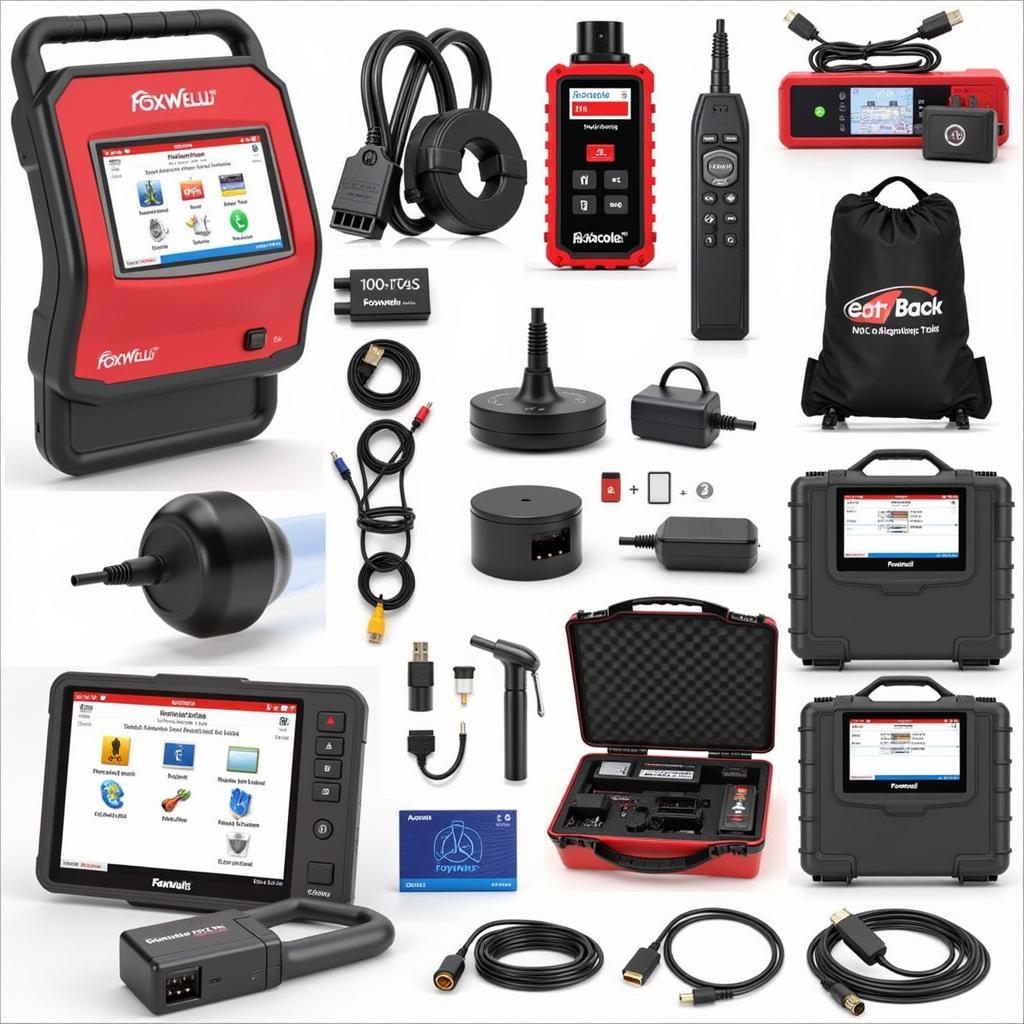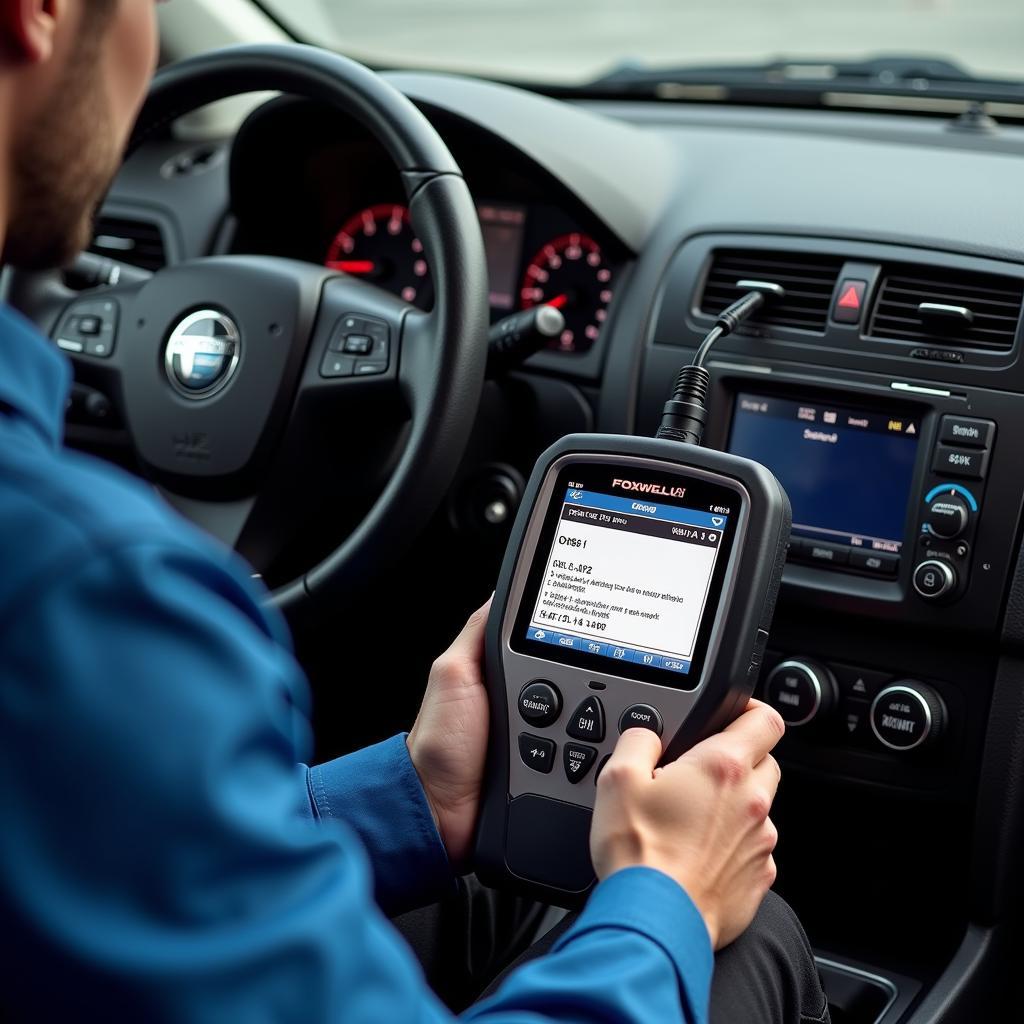“Foxwell Lin Bus Requested Voltage” – This error message, often appearing on your Foxwell diagnostic scanner, can be a head-scratcher for car owners and technicians alike. What does it mean, and more importantly, what can you do about it? This article delves into the complexities of this error, providing you with the knowledge to diagnose and potentially resolve the issue.
Demystifying the LIN Bus and Its Role in Your Vehicle
Before we tackle the error itself, it’s crucial to understand the Local Interconnect Network (LIN) bus and its function within your car. Unlike the more complex CAN bus, the LIN bus is a single-wire communication protocol designed for simpler tasks in your vehicle. It’s a cost-effective solution for controlling components like:
- Door locks and window regulators
- Seat positioning sensors
- Rain sensors
- Lighting modules
Imagine the LIN bus as a network cable connecting your computer to a printer. It allows these components to communicate with the car’s main computer, relaying commands and data.
What Triggers a “Foxwell LIN Bus Requested Voltage” Error?
A “Foxwell LIN Bus requested voltage” message usually indicates a disruption in the communication flow on the LIN bus. The Foxwell scanner, trying to access data from a specific module on the network, fails to establish proper communication due to a voltage discrepancy. Several factors can contribute to this:
1. Faulty Module on the LIN Bus
Just like a malfunctioning printer can disrupt communication with your computer, a faulty module on the LIN bus can lead to communication errors. This could be a faulty door lock actuator, a malfunctioning window regulator motor, or any other component connected to the network.
2. Wiring Issues within the LIN Bus System
A break in the LIN bus wire, a loose connection, or corrosion on the wire can disrupt the voltage flow, hindering communication.
3. Grounding Problems
The LIN bus, like most electrical systems, relies on a stable ground connection. A poor ground connection can lead to voltage fluctuations, triggering the “Foxwell LIN Bus requested voltage” error.
4. Faulty Body Control Module (BCM)
The BCM acts as the central hub for many LIN bus-controlled components. A malfunctioning BCM can disrupt communication across the entire network.
Diagnosing the Root Cause: A Step-by-Step Approach
Pinpointing the exact cause of a “Foxwell LIN Bus requested voltage” error requires a systematic approach:
-
Check the Foxwell Scanner: Begin by ensuring your Foxwell scanner is functioning correctly and is updated with the latest software.
-
Identify the Problematic Module: The error message might specify the module the scanner is trying to access. For instance, if the message reads “Foxwell LIN Bus requested voltage – Door Module,” you can narrow down your search to the door control module and its associated components.
-
Visually Inspect the Wiring and Connections: Examine the wiring harness leading to the suspected module for any visible damage, loose connections, or corrosion. Pay close attention to areas where the harness bends or flexes.
-
Check the Ground Connection: Locate the ground point for the affected module and ensure it’s clean, tight, and free of corrosion.
-
Utilize the Foxwell Scanner’s Diagnostic Capabilities: Advanced Foxwell scanners can perform active tests, allowing you to command specific modules on the LIN bus. This can help isolate the faulty module.
“When dealing with complex electrical systems like the LIN bus, it’s vital to approach diagnostics with patience and a methodical approach. Utilizing the full potential of your Foxwell scanner and having a solid understanding of basic electrical principles can go a long way.” – John Miller, Senior Automotive Electrician
Potential Solutions: Addressing the Error Head-On
Once you’ve identified the source of the “Foxwell LIN Bus requested voltage” error, you can take steps to rectify it:
-
Repair or Replace Faulty Modules: A malfunctioning module might require replacement. Consult your vehicle’s service manual or contact a certified mechanic for assistance.
-
Address Wiring Issues: Repair or replace any damaged, loose, or corroded wires within the LIN bus system.
-
Secure Ground Connections: Clean and tighten any loose or corroded ground connections.
-
Consult a Professional: If the issue persists or you’re uncomfortable tackling electrical repairs, seek assistance from a qualified automotive electrician or mechanic.
Conclusion: Taking Control of LIN Bus Errors
While encountering a “Foxwell LIN Bus requested voltage” error can be frustrating, understanding the underlying causes and employing systematic diagnostic techniques can empower you to address the issue effectively. Remember, the LIN bus, though complex, is a system built on logical principles. By equipping yourself with the right knowledge and tools, you can overcome these communication roadblocks and get your vehicle back on track.
If you’re facing persistent LIN bus issues or require further assistance, don’t hesitate to contact us at ScanToolUS. Our team of experts is readily available to provide guidance and support. Reach us at +1 (641) 206-8880 or visit our office located at 1615 S Laramie Ave, Cicero, IL 60804, USA.
FAQ:
1. Can a weak car battery cause a “Foxwell LIN Bus requested voltage” error?
While a weak battery might contribute to voltage fluctuations, it’s less likely to directly cause this specific error. The LIN bus operates on a lower voltage compared to other systems in your car.
2. Is it safe to drive my car with a “Foxwell LIN Bus requested voltage” error?
The safety implications depend on the module affected. If the error involves critical systems like airbags or electronic stability control, it’s best to avoid driving and seek immediate professional attention.
3. Can I prevent LIN bus errors in the future?
Regular vehicle maintenance, including inspections of wiring harnesses and ground connections, can help prevent many electrical issues, including LIN bus errors.
4. What is the difference between a CAN bus and a LIN bus?
The CAN bus is a more complex, two-wire communication system responsible for high-speed data transmission between critical modules in your vehicle. The LIN bus is a simpler, single-wire system used for less demanding tasks.
5. Are Foxwell scanners capable of diagnosing all LIN bus errors?
While Foxwell scanners are powerful diagnostic tools, their capabilities can vary depending on the specific model and software version. Some complex LIN bus issues might require specialized equipment found in professional automotive workshops.


